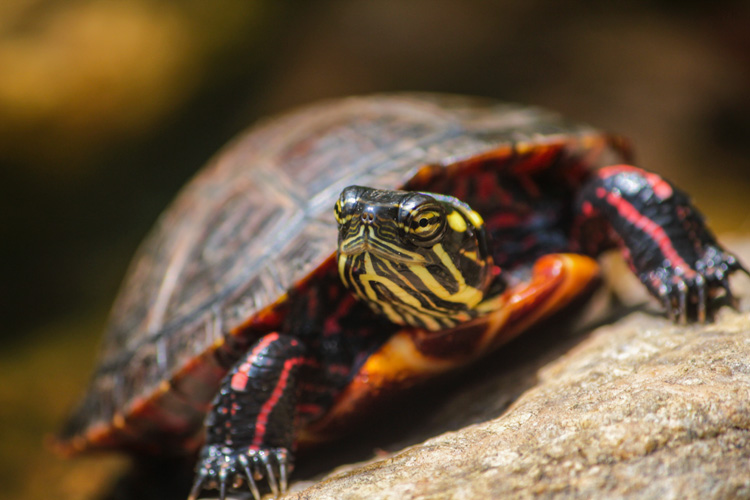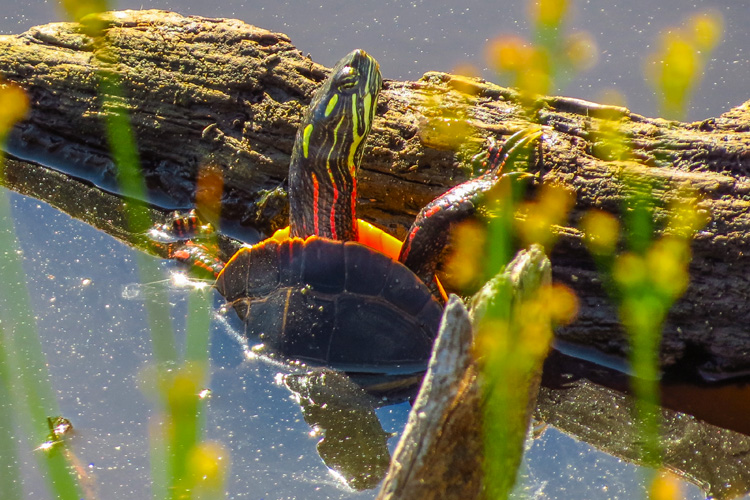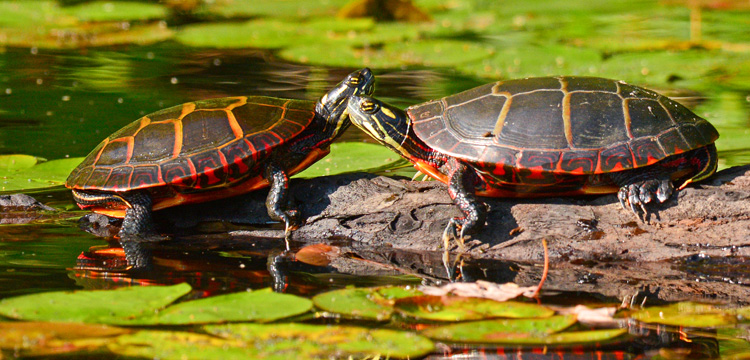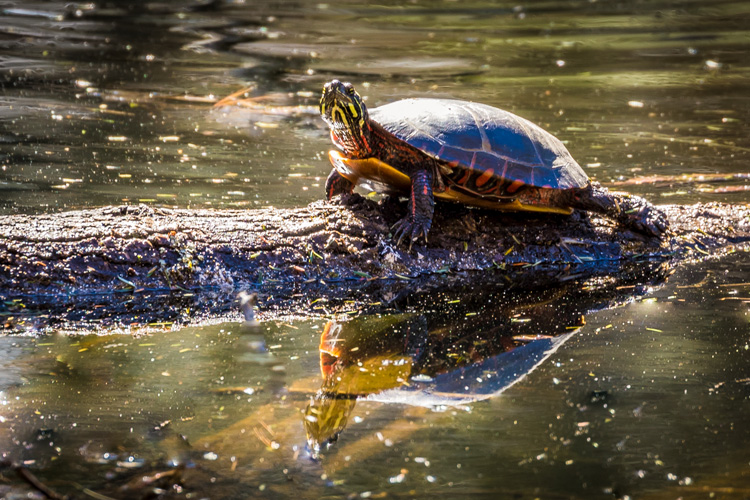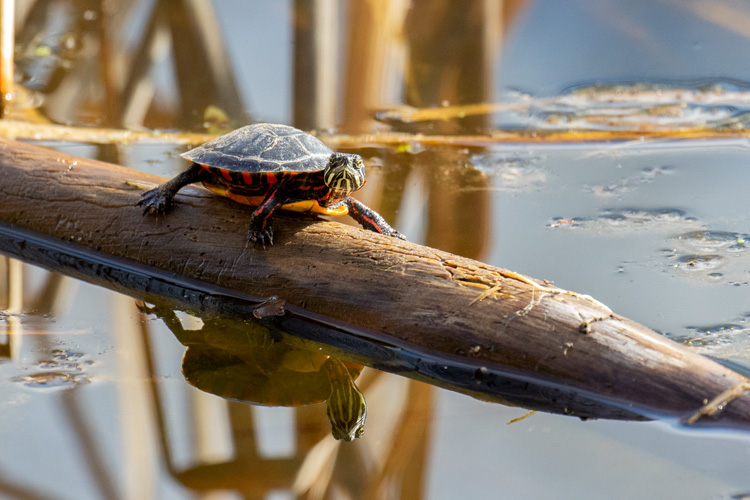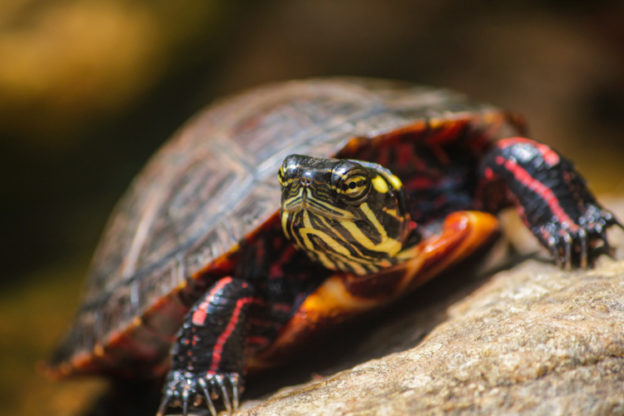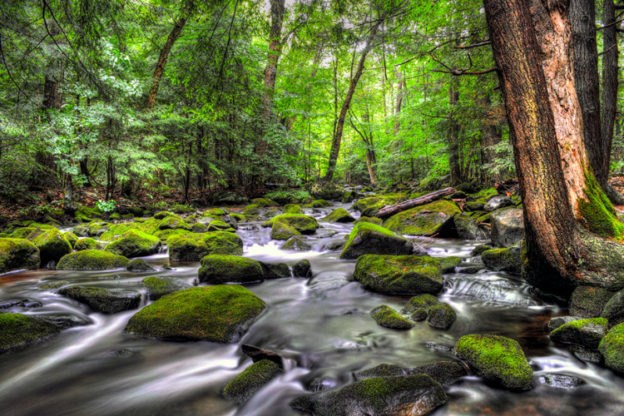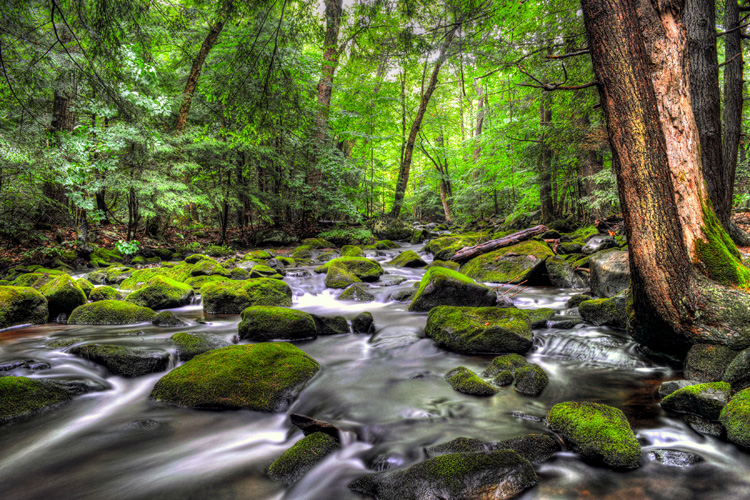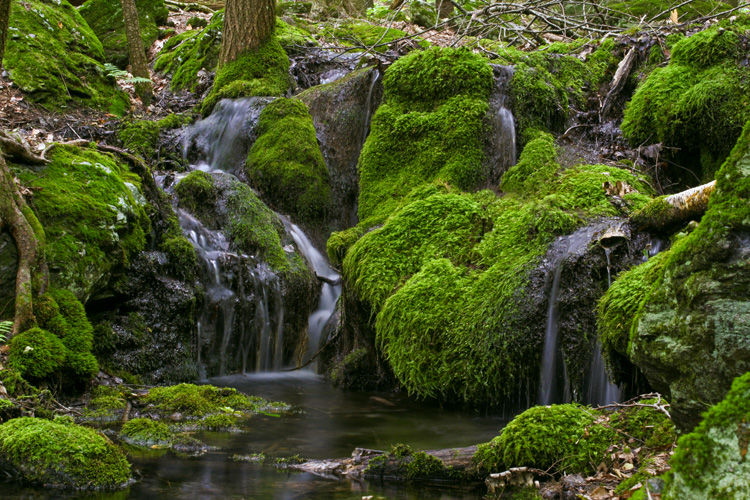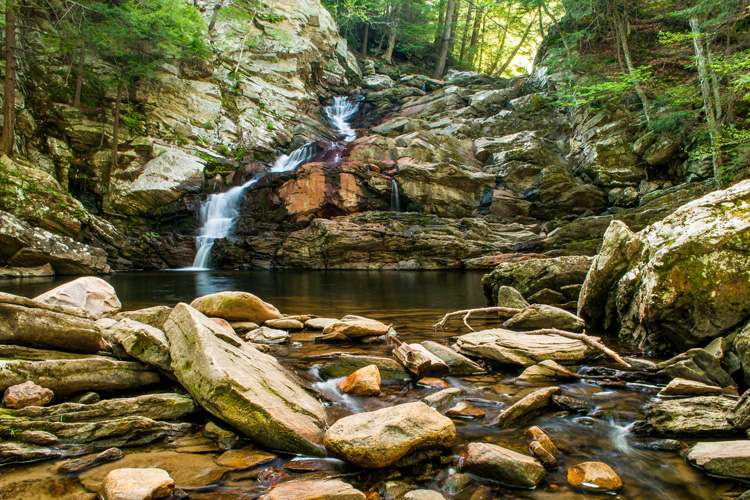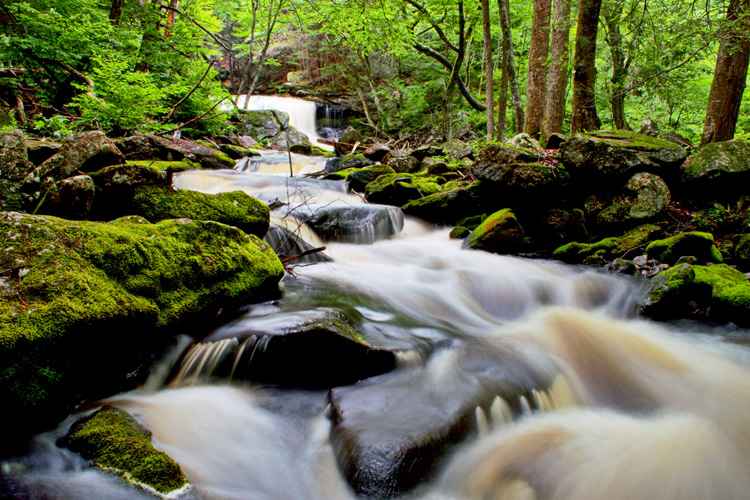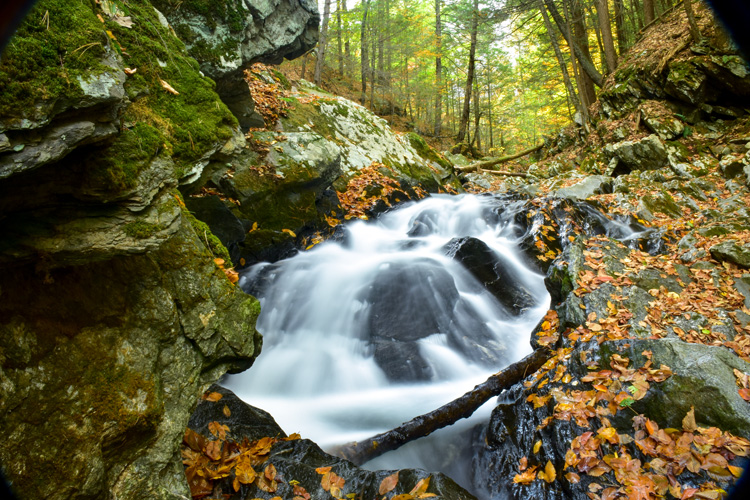A welcome and colorful sign of spring, Painted Turtles are already out sunning themselves after a long, cold winter spent buried under the mud at the bottom of ponds and lakes across the region.
Each fall, as water temperatures drop, Painted Turtles, like many other reptiles, will enter a deep sleep known as brumation—the cold-blooded equivalent of hibernation in mammals—in order to survive the winter. Growth stops, their heart rate slows to a few beats per minute, and their body temperatures drop to conserve energy. For months, they rely on built-up stores of glycogen, a special type of sugar, for the little bit of energy they need to stay alive during brumation.
Unlike warm-blooded hibernators that are slow to rouse in the spring, it’s often much easier for brumaters to wake up as the weather warms, so it’s not uncommon to see a Painted Turtle out basking as early as February if there has been a warming spell or particularly mild winter.
Visit our website to learn all about the ten native species of turtles (plus one invasive) that can be found in Massachusetts as well as what to do if you find a turtle crossing the road and enjoy these five photos of Painted Turtles soaking up the sunshine from our annual Picture This: Your Great Outdoors photo contest. Have you seen any Painted Turtles out on your springtime walks and bike rides? Let us know in the comments!
